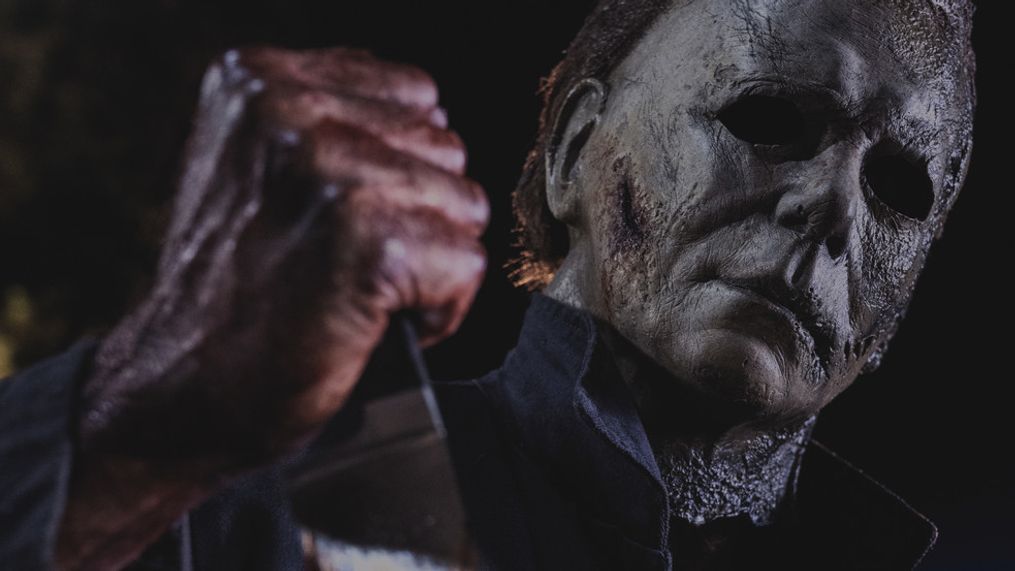Review: 'Halloween Kills' is a blood-soaked diversion on the trail to 'Halloween Ends'
Halloween Kills
3 out of 5 Stars
Director: David Gordon Green
Writer: David Gordon Green, Danny McBride, Scott Teems, John Carpenter (Characters), Debra Hill (Characters)
Starring: Jamie Lee Curtis, Anthony Michael Hall, Judy Greer, Nick Castle, Kyle Richards
Genre: Horror
Rated: R for strong bloody violence throughout, grisly images, language and some drug use
SALT LAKE CITY (KUTV) —Synopsis: Having trapped Michael Myers in a burning home, Laurie and her daughter Karen believe their nightmare to be over. Myers survives and leaves a wake of carnage along his path.
Review: With 1978’s “Halloween,” director/writer John Carpenter made a visceral horror film that used point-of-view cinematography to place the audience in the role of Michael Myers (Nick Castle), the mask-wearing maniac with a pension for large kitchen knives. And yet, the film was largely about Laurie Strode (Jamie Lee Curtis) and Dr. Sam Loomis (Donald Pleasance). Michael was, literally, “The Shape” moving in the shadows.
David Gordon Green’s “Halloween,” 2018’s direct sequel to the 1978 film that ignores the existence of any of the other sequels, was similar in that the focus is on Laurie as she fends off her personal boogeyman. “Halloween Kills” sees Laurie pushed into the background as she tends to her wounds. The focus shifts to the good people of Haddonfield and the trauma that has reverberated through the community for decades. Anger and humiliation are a dangerous mix of emotions. Haddonfield wants the opportunity to avenge its loss of innocence and “Halloween Kills” sees them get their chance.
Led by Tommy Doyle (Anthony Michael Hall) and other Myer survivors, the city scrapes together all its fury to end the legacy it is bound to.
“Halloween Kills” is Michael’s film. The citizens of Haddonfield be damned. They built their collective identity around Myer’s violence and the past inevitably repeats itself in the most brutal of ways.
“Halloween Kills” is an exploration of mob mentality. It’s about the festering fear and anxiety that paralyzes the community. It’s also incredibly violent and Green gives us the point of view of the victims as Myer makes his way back to his family’s home.
What came first, fear or the boogeyman?
2018’s “Halloween” was a solid horror film that pushed off the numerous sequels and reboots that never quite lived up to expectations. It wasn’t as good as 1978’s “Halloween,” but it did feel like Green and co-writers Jeff Fradley and Danny McBride were reclaiming part of the essence of the original that had largely been missing from the franchise for nearly two decades.
“Halloween Kills” isn’t nearly as triumphant. Its purpose, beyond the massive body count, is less defined. Its conclusion feels sloppy and features Curtis delivering a monologue that explains exactly what Green is trying to say with the film. It’s a commentary on society and its relationship with boogeymen. I get it.
The ending is largely dissatisfying. Honestly, had I thought that “Halloween Kills” was the end of the narrative, I would have been frustrated and angry. By pushing the focus away from Laurie, it steals away any sense of victory that was felt at the end of the previous film. It is a vicious downer. We played the game and lost in the most demoralizing way possible.
Fortunately, “Halloween Ends” is scheduled for next October. "Halloween Kills" was never intended to be a possible finale. It was always a bridge between what was and what is next. Where that story takes us will ultimately determine how Green’s films are remembered. My hope is that the final chapter will help to give meaning to the slaughter that is “Halloween Kills.” Let’s see where this ride takes us.




